Sustainable Biocomposites: Harnessing the Potential of Waste Seed-Based Fillers in Eco-Friendly Materials
Abstract
:1. Introduction
2. Overview
- Seed-based fillers/reinforcements: providing an overview of various seeds that have been studied for their potential as fillers or reinforcements and discussing the unique properties of seeds that make them suitable for composite materials (Section 3.1).
- Processing techniques: exploring the different methods used to incorporate seeds into composite matrices and discussing the challenges and opportunities related to processing seed-based composites (Section 3.2).
- Mechanical and physical properties as fillers: analyzing the effect of seed fillers on the mechanical and physical properties of the composite materials and comparing the performance of seed-based composites with traditional composites (Section 4.1).
- Use of seed products as composite matrices: The application as filler in bio-composites is not the only one suitable for seeds use. It is also possible to use polysaccharide seeds for the production of starches to serve as matrices (Section 4.2).
- Characterization for the construction industry: Other sectors, which are actively searching for sustainable fillers, able to avoid or reduce resource depletion, are also of interest for seed-derived materials. This is the case for construction industry, where, the majority of works on seeds in materials can be found (Section 4.3).
- Environmental impact: assessing the environmental benefits of using seed-based fillers compared to conventional fillers (e.g., glass fibers), and discuss the biodegradability and end-of-life considerations of seed-based composites (Section 4.4).
- Comparative analysis: comparing seed-based composites with other types of eco-friendly composites (e.g., natural fibers, recycled materials) in terms of performance, cost, and environmental impact (Section 4.5).
- Applications and industries: identifying potential applications and industries where seed-based composites can be used effectively and discussing any commercial or industrial implementations of seed-based composites (Section 5).
- Conclusion: recapitulating the main findings and arguments discussed and highlighting the potential of seed-based composites as a sustainable alternative in the composite materials industry (Section 6).
3. Materials and Processes
3.1. Seed-Based Fillers/Reinforcements
3.2. Processing Techniques and Composites Fabrication
4. Properties and Sustainability
- Obtaining sufficient properties that would improve the wearing out pattern of the composite and allow it to be used for applications involving some duration of use (i.e., not being limited to single use) [112]. This will have to happen also for used for which wear is expected and is important it to be predictable, i.e., in the tribological field [113].
- Be ready for introduction in composites with limited, if any, chemical/thermal/physical treatment, providing an adequate interfacial strength and quasi-uniform adhesion with the matrix, nonetheless. A wealth of possible methods does exist, though many may be aggressive and result in further chemicals’ discharge [114].Represent a believable alternative, able to be successfully proposed and applied, to the incineration of the biomass involved, in view of its perceived and demonstrated structural and functional quality in the developed composite [115]. In Figure 9, some indications are provided, which particularly suggest the position of materials from agrowaste, among which are seed-based ones as a source for the development of new bio-materials (although the term is controversial, being also dedicated to those designed for interaction with human body; hence, biocompatible) [116]. This would suggest, for example, in our specific case the application, e.g., of seed derivatives in low-value items, such as asphalt modifier, normally in the form of biochar [117]. This was applied in the case of Mesua ferrea particles in excess of 150 microns [118], although in other cases, such as for apricot seed shells, the modification was carried out at more manageable temperatures, i.e., 180 °C [119]. This is obviously a better solution than waste production, and does not pertain to a real circular economy concept. As a result, further considerations on the construction industry use of seed-derived materials, as exposed in Section 4.2, will offer more exposure to studies that involve limited treatment of waste for its introduction.
4.1. Mechanical and Physical Properties as Fillers
4.2. Use of Seed Products as Composite Matrices
4.3. Characterization of Seed Products for the Construction Industry
4.4. Comparative Analysis with Conventional Composites
4.5. Environmental Impact: LCA Studies on Seed-Based Materials and Related Systems
5. Applicability
6. Conclusions
Author Contributions
Funding
Institutional Review Board Statement
Informed Consent Statement
Data Availability Statement
Acknowledgments
Conflicts of Interest
References
- Hammajam Alhaji, A.; Ismarrubie Zahari, N.; Sapuan Mohd, S. Review of agro waste plastic composites production. J. Min. Mater. Character. Eng. 2013, 1, 37218. [Google Scholar]
- De Paola, S.; Minak, G.; Fragassa, C.; Pavlovic, A. Green Composites: A Review of State of Art. In Proceedings of the 30th DANUBlA-ADRIA Symposium on Advances in Experimental Mechanics, DAS 2013 Proceedings, Primosten, Croatia, 25–28 September 2013; pp. 77–78. [Google Scholar]
- Puglia, D.; Sarasini, F.; Santulli, C.; Kenny, J.M. Manufacturing of natural fiber/agrowaste based polymer composites. In Green Biocomposites: Manufacturing and Properties; Jawaid, M., Sapuan, S.M., Alothman, O.Y., Eds.; Springer: Cham, Switzerland, 2017; pp. 125–147. [Google Scholar]
- Pao, C.N.Z.; Yeng, C.M. Properties and characterization of wood plastic composites made from agro-waste materials and post-used expanded polyester foam. J. Thermoplast. Compos. Mater. 2019, 32, 951–966. [Google Scholar] [CrossRef]
- Santulli, C. Utilization of Renewable Biomass and Waste Materials for Production of Environmentally-Friendly, Bio-based Composites. In Eco-Friendly Adhesives for Wood and Natural Fiber Composites: Characterization, Fabrication and Applications; Jawaid, M., Khan, T.A., Nasir, M., Asim, M., Eds.; Springer: Cham, Switzerland, 2021; pp. 131–145. [Google Scholar]
- Saavedra, I.R.L.; Miguel, J.J.O.; Castañeda-Olivera, C.A.; Galván, J.J.O.; Alfaro, E.B. Biochar from Residual Lignocellulosic Biomass for the Cultivation of Prosopis Limensis. Chem. Eng. Trans. 2022, 92, 223–228. [Google Scholar]
- Skodras, G.; Diamantopoulou, I.; Zabaniotou, A.; Stavropoulos, G.; Sakellaropoulos, G.P. Enhanced mercury adsorption in activated carbons from biomass materials and waste tires. Fuel Process Technol. 2007, 88, 749–758. [Google Scholar] [CrossRef]
- Stavropoulos, G.G.; Zabaniotou, A.A. Production and characterization of activated carbons from olive-seed waste residue. Micropor. Mesopor. Mater. 2005, 82, 79–85. [Google Scholar] [CrossRef]
- Ghosh, S.; Nandasana, M.; Webster, T.J.; Thongmee, S. Agrowaste-generated biochar for the sustainable remediation of refractory pollutants. Front. Chem. 2023, 11, 1266556. [Google Scholar] [CrossRef]
- Cruz, G.J.; Mondal, D.; Rimaycuna, J.; Soukup, K.; Gómez, M.M.; Solis, J.L.; Lang, J. Agrowaste derived biochars impregnated with ZnO for removal of arsenic and lead in water. J. Environ. Chem. Eng. 2020, 8, 103800. [Google Scholar] [CrossRef]
- Kadhom, M.; Albayati, N.; Alalwan, H.; Al-Furaiji, M. Removal of dyes by agricultural waste. Sustain. Chem. Pharm. 2020, 16, 100259. [Google Scholar] [CrossRef]
- Khee, Y.L.; Kiew, P.L.; Chung, Y.T. Valorizing papaya seed waste for wastewater treatment: A review. Int. J. Environ. Sci. Technol. 2023, 20, 2327–2346. [Google Scholar] [CrossRef]
- Reddy, M.S.; Sivaramakrishna, L.; Reddy, A.V. The use of an agricultural waste material, Jujuba seeds for the removal of anionic dye (Congo red) from aqueous medium. J. Hazard. Mater. 2012, 203, 118–127. [Google Scholar] [CrossRef]
- Inayat, A.; Jamil, F.; Ghenai, C.; Kamil, M.; Bokhari, A.; Waris, A.; Rafiq, S.; Khurram, S. Biodiesel synthesis from neem oil using neem seeds residue as sustainable catalyst support. Biomass Convers. Biorefinery 2021, 1–6. [Google Scholar] [CrossRef]
- Coelho, J.P.; Filipe, R.M.; Robalo, M.P.; Stateva, R.P. Recovering value from organic waste materials: Supercritical fluid extraction of oil from industrial grape seeds. J. Supercrit. Fluids 2018, 141, 68–77. [Google Scholar] [CrossRef]
- Sydow, Z.; Sydow, M.; Wojciechowski, Ł.; Bieńczak, K. Tribological performance of composites reinforced with the agricultural, industrial and post-consumer wastes: A review. Materials 2021, 14, 1863. [Google Scholar] [CrossRef]
- Sydow, Z.; Bula, K.; Gapiński, B. Friction and wear of polypropylene-based composites reinforced with cherry seed powder. Trib. Int. 2023, 179, 108177. [Google Scholar]
- Ige, O.E.; Inambao, L.F.; Adewumi, A.G. Biomass-based composites for brake pads: A review. Int. J. Mech. Eng. Technol. 2019, 10, 920–943. [Google Scholar]
- Ammar, Z.; Ibrahim, H.; Adly, M.; Sarris, I.; Mehanny, S. Influence of natural fiber content on the frictional material of brake pads—A review. J. Compos. Sci. 2023, 7, 72. [Google Scholar] [CrossRef]
- Ajibade, O.A.; Agunsoye, J.O.; Oke, S.A. A wear rate model incorporating inflationary cost of agro-waste filled composites for brake pad applications to lower composite cost. SN Appl. Sci. 2021, 3, 1–21. [Google Scholar] [CrossRef]
- Balart, R.; Montanes, N.; Dominici, F.; Boronat, T.; Torres-Giner, S. Environmentally friendly polymers and polymer composites. Materials 2020, 13, 4892. [Google Scholar] [CrossRef]
- Cabrera, F.C. Eco-friendly polymer composites: A review of suitable methods for waste management. Polym. Compos. 2021, 42, 2653–2677. [Google Scholar] [CrossRef]
- Lucarini, M.; Durazzo, A.; Romani, A.; Campo, M.; Lombardi-Boccia, G.; Cecchini, F. Bio-based compounds from grape seeds: A biorefinery approach. Molecules 2018, 23, 1888. [Google Scholar] [CrossRef]
- Mohite, A.S.; Jagtap, A.R.; Avhad, M.S.; More, A.P. Recycling of major agriculture crop residues and its application in polymer industry: A Review in the context of waste to energy nexus. Energy Nexus 2022, 7, 100134. [Google Scholar] [CrossRef]
- ASTM D790-17; Standard Test Methods for Flexural Properties of Unreinforced and Reinforced Plastics and Electrical Insulating Materials. ASTM: West Conshohocken, PA, USA, 2017.
- ASTM D638-22; Standard Test Method for Tensile Properties of Plastics. ASTM: West Conshohocken, PA, USA, 2022.
- Dattu, V.S.C.; Lokesh, M.; Kumar, A.; Rajkumar, M.; Vallavi, M.A.; Britto, A.S.F. Mechanical characterization of polymer composite reinforced with bio-fillers. Mater. Today Proc. 2022, 69, 695–699. [Google Scholar] [CrossRef]
- Naik, S.; Halemani, B.; Raju, G.U. Investigation of the mechanical properties of tamarind seed particles reinforced epoxy composites. In AIP Conference Proceedings; AIP Publishing: College Park, MD, USA, 2019; Volume 2057. [Google Scholar]
- ISO, 179; Plastics. Determination of Charpy Impact Strength. ISO: Geneva, Switzerland, 1997.
- Voicu, G.; Tudosie, E.M.; Ungureanu, N.; Constantin, G.A. Some mechanical characteristics of wheat seeds obtained by uniaxial compression tests. Univ. Politeh. Buch. Sci. Bull. D 2013, 75, 265–278. [Google Scholar]
- Zarei, A.; Zamani, Z.; Fatahi, R.; Mousavi, A.; Salami, S.A. A mechanical method of determining seed-hardness in pomegranate. J. Crop Improv. 2013, 27, 444–459. [Google Scholar] [CrossRef]
- Jafari, S.; Khazaei, J.; Arabhosseini, A.; Massah, J.; Khoshtaghaza, M.H. Study on mechanical properties of sunflower seeds. Electron. J. Pol. Agric. Univ. 2011, 14, 6. [Google Scholar]
- Izli, N.; Unal, H.; Sincik, M. Physical and mechanical properties of rapeseed at different moisture content. Int. Agrophys 2009, 23, 137–145. [Google Scholar]
- Bastos, A.C.; Ferraz, A.C.D.O. Mechanical properties of castor beans subject to different drying temperatures aiming to disrupt the bean coat. Eng. Agrícola 2014, 34, 93–101. [Google Scholar] [CrossRef]
- Yang, L.; Chen, H.; Xiao, J.; Fan, Y.; Song, S.; Zhang, Y.; Liu, X. Research on Structural–Mechanical Properties during the Castor Episperm Breaking Process. Processes 2021, 9, 1777. [Google Scholar] [CrossRef]
- Arrakhiz, F.Z.; Benmoussa, K.; Bouhfid, R.; Qaiss, A. Pine cone fiber/clay hybrid composite: Mechanical and thermal properties. Mater. Des. 2013, 50, 376–381. [Google Scholar] [CrossRef]
- Summerscales, J.; Dissanayake, N.P. Allocation in the life cycle assessment (LCA) of flax fibres for the reinforcement of composites. In Advances in Natural Fibre Composites: Raw Materials, Processing and Analysis; Springer International Publishing: Berlin/Heidelberg, Germany, 2018; pp. 223–235. [Google Scholar]
- Sirisomboon, P.; Kitchaiya, P.; Pholpho, T.; Mahuttanyavanitch, W. Physical and mechanical properties of Jatropha curcas L. fruits, nuts and kernels. Biosyst. Eng. 2007, 97, 201–207. [Google Scholar] [CrossRef]
- Ala’a, H.; Osman, A.I.; Jamil, F.; Mehta, N.; Al-Haj, L.; Coulon, F.; Al-Maawali, S.; Al Nabhani, A.; Kyaw, H.H.; Rooney, D.W.; et al. Integrating life cycle assessment and characterisation techniques: A case study of biodiesel production utilising waste Prunus Armeniaca seeds (PAS) and a novel catalyst. J. Environ. Manag. 2022, 304, 114319. [Google Scholar]
- Altuntas, E.; Erkol, M. The effects of moisture content, compression speeds, and axes on mechanical properties of walnut cultivars. Food Bioproc. Technol. 2011, 4, 1288–1295. [Google Scholar] [CrossRef]
- Henrique, M.A.; Silvério, H.A.; Neto, W.P.F.; Pasquini, D. Valorization of an agro-industrial waste, mango seed, by the extraction and characterization of its cellulose nanocrystals. J. Environ. Manag. 2013, 121, 202–209. [Google Scholar] [CrossRef] [PubMed]
- García-Mahecha, M.; Soto-Valdez, H.; Peralta, E.; Carvajal-Millan, E.; Madera-Santana, T.J.; Lomelí-Ramírez, M.G.; Colín-Chávez, C. Production and Characterization of Cellulosic Pulp from Mango Agro-Industrial Waste and Potential Applications. Polymers 2023, 15, 3163. [Google Scholar] [CrossRef] [PubMed]
- Rahman, M.M.; Ho, K.; Netravali, A.N. Bio-based polymeric resin from agricultural waste, neem (Azadirachta indica) seed cake, for green composites. J. Appl. Polym. Sci. 2015, 132. [Google Scholar] [CrossRef]
- Rahman, M.M.; Netravali, A.N. Green resin from forestry waste residue “Karanja (Pongamia pinnata) seed cake” for biobased composite structures. ACS Sustain. Chem. Eng. 2014, 2, 2318–2328. [Google Scholar] [CrossRef]
- Shivamurthy, B.; Murthy, K.; Joseph, P.C.; Rishi, K.; Bhat, K.U.; Anandhan, S. Mechanical properties and sliding wear behavior of jatropha seed cake waste/epoxy composites. J. Mater. Cycles Waste Manag. 2015, 17, 144–156. [Google Scholar] [CrossRef]
- Fu, D.; Netravali, A.N. Green composites based on avocado seed starch and nano-and micro-scale cellulose. Polym. Compos. 2020, 41, 4631–4648. [Google Scholar] [CrossRef]
- Garba, Z.N.; Rahim, A.A.; Bello, B.Z. Optimization of preparation conditions for activated carbon from Brachystegia eurycoma seed hulls: A new precursor using central composite design. J. Environ. Chem. Eng. 2015, 3, 2892–2899. [Google Scholar] [CrossRef]
- Garba, Z.N.; Rahim, A.A. Adsorption of 4-chlorophenol onto optimum activated carbon from an agricultural waste. Int. J. Sci. Res. 2015, 4, 1931–1936. [Google Scholar]
- Neme, I.; Gonfa, G.; Masi, C. Preparation and characterization of activated carbon from castor seed hull by chemical activation with H3PO4. Results Mater. 2022, 15, 100304. [Google Scholar] [CrossRef]
- De’ Nobili, M.D.; Bernhardt, D.C.; Basanta, M.F.; Rojas, A.M. Sunflower (Helianthus annuus L.) seed hull waste: Composition, antioxidant activity, and filler performance in pectin-based film composites. Front. Nutr. 2021, 8, 777214. [Google Scholar] [CrossRef]
- Hameed, B.H.; El-Khaiary, M.I. Removal of basic dye from aqueous medium using a novel agricultural waste material: Pumpkin seed hull. J. Hazard. Mater. 2008, 155, 601–609. [Google Scholar] [CrossRef]
- Lima, E.M.B.; Middea, A.; Neumann, R.; Thiré, R.M.D.S.M.; Pereira, J.F.; de Freitas, S.C.; Penteado, M.S.; Lima, A.M.; Minguita, A.P.D.S.; Corrêa, A.C.; et al. Biocomposites of PLA and mango seed waste: Potential material for food packaging and a technological alternative to reduce environmental impact. Starch-Stärke 2021, 73, 2000118. [Google Scholar] [CrossRef]
- Gomez-Caturla, J.; Lascano, D.; Montanes, N.; Balart, R.; Dominici, F.; Puglia, D.; Torre, L. Manufacturing and characterization of highly environmentally-friendly composites with polylactide matrix and mango kernel seed flour. Expr. Polym. Lett. 2023, 17, 334. [Google Scholar] [CrossRef]
- Ameh, A.O.; Isa, M.T.; Sanusi, I. Effect of particle size and concentration on the mechanical properties of polyester/date palm seed particulate composites. Leon Electron. J. Pract. Technol. 2015, 14, 65–78. [Google Scholar]
- Elkhouly, H.I.; Abdel-Magied, R.K.; Aly, M.F. Date palm seed as suitable filler material in glass–epoxy composites. Iran. Polym. J. 2019, 28, 65–73. [Google Scholar] [CrossRef]
- Kuram, E. Rheological, mechanical and morphological properties of acrylonitrile butadiene styrene composite filled with sunflower seed (Helianthus annuus L.) husk flour. J. Polym. Res. 2020, 27, 219. [Google Scholar] [CrossRef]
- Ławińska, K. Production of Agglomerates, Composite Materials, and Seed Coatings from Tannery Waste as New Methods for Its Management. Materials 2021, 14, 6695. [Google Scholar] [CrossRef]
- Pompei, S.; Tirillò, J.; Sarasini, F.; Santulli, C. Development of Thermoplastic Starch (TPS) Including Leather Waste Fragments. Polymers 2020, 12, 1811. [Google Scholar] [CrossRef] [PubMed]
- Zdanowska, P.; Florczak, I.; Słoma, J.; Tucki, K.; Orynycz, O.; Wasiak, A.; Świć, A. An evaluation of the quality and microstructure of biodegradable composites as contribution towards better management of food industry wastes. Sustainability 2019, 11, 1504. [Google Scholar] [CrossRef]
- Golshan Tafti, A.; Solaimani Dahdivan, N.; Yasini Ardakani, S.A. Physicochemical properties and applications of date seed and its oil. Int. Food Res. J. 2017, 24, 1399–1406. [Google Scholar]
- Fikry, M.; Yusof, Y.A.; Al-Awaadh, A.M.; Rahman, R.A.; Chin, N.L.; Mousa, E.; Chang, L.S. Effect of the roasting conditions on the physicochemical, quality and sensory attributes of coffee-like powder and brew from defatted palm date seeds. Foods 2019, 8, 61. [Google Scholar] [CrossRef]
- Venkatachalam, C.D.; Sengottian, M. Study on roasted date seed non caffeinated Coffee powder as a promising alternative. Asian J. Res. Soc. Sci. Humanit. 2016, 6, 1387–1394. [Google Scholar] [CrossRef]
- Terral, J.F.; Newton, C.; Ivorra, S.; Gros-Balthazard, M.; de Morais, C.T.; Picq, S.; Tengberg, M.; Pintaud, J.C. Insights into the historical biogeography of the date palm (Phoenix dactylifera L.) using geometric morphometry of modern and ancient seeds. J. Biogeogr. 2012, 39, 929–941. [Google Scholar] [CrossRef]
- Ajuria, J.; Redondo, E.; Arnaiz, M.; Mysyk, R.; Rojo, T.; Goikolea, E. Lithium and sodium ion capacitors with high energy and power densities based on carbons from recycled olive pits. J. Power Sources 2017, 359, 17–26. [Google Scholar] [CrossRef]
- Celik, H.; Nadaroglu, H.; Senol, M. Evaluation of antioxidant, antiradicalic and antimicrobial activities of olive pits (Olea europaea L.). Bulg. J. Agric. Sci. 2014, 20, 1392–1400. [Google Scholar]
- Kumari, N.; Kumar, M.; Puri, S.; Baohong, Z.; Rais, N.; Pundir, A.; Chandran, D.; Raman, P.; Dhumal, S.; Lorenzo, J.M. Peach (Prunus persica (L.) Batsch) seeds and kernels as potential plant-based functional food ingredients: A review of bioactive compounds and health-promoting activities. Food Biosci. 2023, 54, 102914. [Google Scholar] [CrossRef]
- Grubeša, I.N.; Marković, B.; Nyarko, M.H.; Krstić, H.; Brdarić, J.; Filipović, N.; Szenti, I.; Kukovecz, Á. Potential of fruit pits as aggregate in concrete. Constr. Build. Mater. 2022, 345, 128366. [Google Scholar] [CrossRef]
- Hernández-Rentero, C.; Córdoba, R.; Moreno, N.; Caballero, A.; Morales, J.; Olivares-Marín, M.; Gómez-Serrano, V. Low-cost disordered carbons for Li/S batteries: A high-performance carbon with dual porosity derived from cherry pits. Nano Res. 2018, 11, 89–100. [Google Scholar] [CrossRef]
- Benhamou, A.A.; Kassab, Z.; Boussetta, A.; Salim, M.H.; Ablouh, E.H.; Nadifiyine, M.; Moubarik, A.; El Achaby, M. Beneficiation of cactus fruit waste seeds for the production of cellulose nanostructures: Extraction and properties. Int. J. Biol. Macromol. 2022, 203, 302–311. [Google Scholar] [CrossRef]
- Al-Wandawi, H.; Abdul-Rahman, M.; Al-Shaikhly, K. Tomato processing wastes as essential raw materials source. J. Agric. Food Chem. 1985, 33, 804–807. [Google Scholar] [CrossRef]
- Schettini, E.; Santagata, G.; Malinconico, M.; Immirzi, B.; Mugnozza, G.S.; Vox, G. Recycled wastes of tomato and hemp fibres for biodegradable pots: Physico-chemical characterization and field performance. Resour. Conserv. Recycl. 2013, 70, 9–19. [Google Scholar] [CrossRef]
- Jeguirim, S.E. Tomato wastes valorization for bio-based materials production. In Tomato Processing By-Products; Jeguirim, M., Zorpas, A., Eds.; Academic Press: Cambridge, MA, USA, 2022; pp. 149–170. [Google Scholar]
- Brinker, F. Prickly pear as food and medicine. J. Diet. Suppl. 2009, 6, 362–376. [Google Scholar] [CrossRef]
- Sawaya, W.N.; Khan, P. Chemical characterization of prickly pear seed oil, Opuntia ficus-indica. J. Food Sci. 1982, 47, 2060–2061. [Google Scholar] [CrossRef]
- Ennouri, M.; Evelyne, B.; Laurence, M.; Hamadi, A. Fatty acid composition and rheological behaviour of prickly pear seed oils. Food Chem. 2005, 93, 431–437. [Google Scholar] [CrossRef]
- Karabagias, V.K.; Karabagias, I.K.; Gatzias, I.; Badeka, A.V. Prickly pear seed oil by shelf-grown cactus fruits: Waste or maste? Processes 2020, 8, 132. [Google Scholar] [CrossRef]
- Kammoun, Z.; Trabelsi, A. Development of lightweight concrete using prickly pear fibres. Constr. Build. Mater. 2019, 210, 269–277. [Google Scholar] [CrossRef]
- El-Gendi, H.; Salama, A.; El-Fakharany, E.M.; Saleh, A.K. Optimization of bacterial cellulose production from prickly pear peels and its ex situ impregnation with fruit byproducts for antimicrobial and strawberry packaging applications. Carbohydr. Polym. 2023, 302, 120383. [Google Scholar] [CrossRef]
- Hernández-Carranza, P.; Rivadeneyra-Mata, M.; Ramos-Cassellis, M.E.; Aparicio-Fernández, X.; Navarro-Cruz, A.R.; Ávila-Sosa, R.; Ochoa-Velasco, C.E. Characterization of red prickly pear peel (Opuntia ficus-indica L.) and its mucilage obtained by traditional and novel methodologies. J. Food Meas. Charact. 2019, 13, 1111–1119. [Google Scholar] [CrossRef]
- Bagula, M.; Arya, S.S. Tamarind seeds: Chemistry, technology, applications and health benefits: A review. Seed 1998, 70, 25–35. [Google Scholar]
- Nayak, A.K.; Pal, D. Development of pH-sensitive tamarind seed polysaccharide–alginate composite beads for controlled diclofenac sodium delivery using response surface methodology. Int. J. Biol. Macromol. 2011, 49, 784–793. [Google Scholar] [CrossRef] [PubMed]
- Balasundar, P.; Narayanasamy, P.; Senthil, S.; Al-Dhabi, N.A.; Prithivirajan, R.; Kumar, R.S.; Ramkumar, T.; Bhat, K.S. Physico-chemical study of pistachio (Pistacia vera) nutshell particles as a bio-filler for eco-friendly composites. Mater. Res. Expr. 2019, 6, 105339. [Google Scholar] [CrossRef]
- Salazar-Cruz, B.A.; Chávez-Cinco, M.Y.; Morales-Cepeda, A.B.; Ramos-Galván, C.E.; Rivera-Armenta, J.L. Evaluation of thermal properties of composites prepared from pistachio shell particles treated chemically and polypropylene. Molecules 2022, 27, 426. [Google Scholar] [CrossRef] [PubMed]
- Geneau-Sbartaï, C.; Leyris, J.; Silvestre, F.; Rigal, L. Sunflower cake as a natural composite: Composition and plastic properties. J. Agric. Food Chem. 2008, 56, 11198–11208. [Google Scholar] [CrossRef] [PubMed]
- Hosseini, A.R.; Zahabi, N. Fabrication and rheological properties of a novel interpenetrating network hydrogel based on sage seed hydrocolloid and globulin from the hydrocolloid extraction by-product. Int. J. Biol. Macromol. 2023, 253, 127452. [Google Scholar] [CrossRef]
- Ayrilmis, N.; Kaymakci, A.; Ozdemir, F. Sunflower seed cake as reinforcing filler in thermoplastic composites. J. Appl. Polym. Sci. 2013, 129, 1170–1178. [Google Scholar] [CrossRef]
- Babić, L.J.; Radojčin, M.; Pavkov, I.; Babić, M.; Turan, J.; Zoranovią, M.; Stanišią, S. Physical properties and compression loading behaviour of corn seed. Int. Agrophys 2013, 27, 119–126. [Google Scholar] [CrossRef]
- Baümler, E.; Cuniberti, A.; Nolasco, S.M.; Riccobene, I.C. Moisture dependent physical and compression properties of safflower seed. J. Food Eng. 2006, 72, 134–140. [Google Scholar] [CrossRef]
- Singh, K.K.; Goswami, T.K. Mechanical properties of cumin seed (Cuminum cyminum Linn.) under compressive loading. J. Food Eng. 1998, 36, 311–321. [Google Scholar] [CrossRef]
- Olukayode, O.; Alade, E.I.; Oyelami, S. Effect of moisture contents and compression axes on some physical and mechanical properties of Dioclea reflexa seed. J. Appl. Life Sci. Environ. 2022, 55, 189–200. [Google Scholar] [CrossRef]
- Shashikumar, C.; Pradhan, R.C.; Mishra, S. Influence of moisture content and compression axis on physico-mechanical properties of Shorea robusta seeds. J. Inst. Eng. (India) A 2018, 99, 279–286. [Google Scholar] [CrossRef]
- Shreelavaniya, R.; Kamaraj, S. Effect of moisture content on physical properties of black pepper. Int. J. Curr. Microbiol. Appl. Sci. 2017, 6, 4873–4879. [Google Scholar] [CrossRef]
- Liu, Y.; Lyu, L.; Guo, J.; Wang, Y. Sound absorption performance of the poplar seed Fiber/PCL composite materials. Materials 2020, 13, 1465. [Google Scholar] [CrossRef] [PubMed]
- Shokir, A.; Avazbek, O.; Olimjon, S. Research of Separation of Industrial Fiber from Cotton Waste. Des. Eng. 2021, 9, 11442–11453. [Google Scholar]
- Baker, R.V.; Anthony, W.S.; Sutton, R.M. Seed cotton cleaning and extracting. Cotton Ginners Handb. Agric. Handb. 1994, 503, 69–89. [Google Scholar]
- Zheng, Y.; Wang, A. Kapok fiber: Applications. In Biomass and Bioenergy: Applications; Hakeem, K.R., Jawaid, M., Rashid, U., Eds.; Springer: Berlin/Heidelberg, Germany, 2014; pp. 251–266. [Google Scholar]
- Mohan Kumar, K.; Naik, V.; Waddar, S.S.; Santhosh, N.; Kaup, V.; Harish, H.V. Mechanical and water absorption characterization of mango seed shell/epoxy composite for low load carrying structures. Int. J. Polym. Sci. 2023, 2023, 9976409. [Google Scholar] [CrossRef]
- Abd Mohammed, A. Study the thermal properties and water absorption of composite materials reinforced with date and olive seeds. Iraqi J. Mech. Mater. Eng. 2015, 15, 138–152. [Google Scholar]
- Elkhouly, H.I.; Abdel-Magied, R.K.M.; Aly, M.F. An investigation of date palm seed as effective filler material of glass–epoxy composites using optimization techniques. Polym. Polym. Compos. 2020, 28, 541–553. [Google Scholar] [CrossRef]
- Nagaraj, N.; Balasubramaniam, S.; Venkataraman, V.; Manickam, R.; Nagarajan, R.; Oluwarotimi, I.S. Effect of cellulosic filler loading on mechanical and thermal properties of date palm seed/vinyl ester composites. Int. J. Biol. Macromol. 2020, 147, 53–66. [Google Scholar] [CrossRef]
- Murawski, A.; Diaz, R.; Inglesby, S.; Delabar, K.; Quirino, R.L. Synthesis of bio-based polymer composites: Fabrication, fillers, properties, and challenges. In Polymer Nanocomposites in Biomedical Engineering; Sadasivunim, K.K., Ponnamma, D., Rajan, M., Ahmed, B., Ali, M., Al-Maadeed, S.A., Eds.; Springer: Cham, Switzerland, 2019; pp. 29–55. [Google Scholar]
- Bodîrlău, R.; Teacă, C.A.; Spiridon, I. Green composites comprising thermoplastic corn starch and various cellulose-based fillers. BioResources 2014, 9, 39–53. [Google Scholar] [CrossRef]
- Abu-Jdayil, B.; Hittini, W.; Mourad, A.H. Development of date pit–polystyrene thermoplastic heat insulator material: Physical and thermal properties. Int. J. Polym. Sci. 2019, 2019, 1697627. [Google Scholar] [CrossRef]
- Mittal, V.; Luckachan, G.E.; Chernev, B.; Matsko, N.B. Bio-polyester–date seed powder composites: Morphology and component migration. Polym. Eng. Sci. 2015, 55, 877–888. [Google Scholar] [CrossRef]
- Muniyadi, M.; Ng, T.Y.S.; Munusamy, Y.; Ooi, Z.X. Mimusops elengi seed Shell powder as a new bio-filler for polypropylene-based bio-composites. BioResource 2018, 13, 272–289. [Google Scholar] [CrossRef]
- Appu, S.P.; Ashwaq, O.; Al-Harthi, M.; Umar, Y. Fabrication and characterization of composites from recycled polyethylene and date palm seed powder. J. Thermoplast. Compos. Mater. 2021, 34, 316–327. [Google Scholar] [CrossRef]
- Mazzanti, V.; Malagutti, L.; Mollica, F. FDM 3D printing of polymers containing natural fillers: A review of their mechanical properties. Polymers 2019, 11, 1094. [Google Scholar] [CrossRef]
- Karunakaran, K.; Pugazhenthi, R.; Anbuchezhiyan, G.; Saravanan, R.; Reddy, M.V. Experimental investigations on synthesis and characterization of tamarind seed powder reinforced bio-composites. Mater. Today Proc. 2022, 64, 760–764. [Google Scholar] [CrossRef]
- Nagarjun, J.; Kanchana, J.; Rajeshkumar, G.; Anto Dilip, A. Enhanced mechanical characteristics of polylactic acid/tamarind kernel filler green composite filament for 3D printing. Polym. Compos. 2023, 44, 7925–7940. [Google Scholar] [CrossRef]
- Scaffaro, R.; Citarrella, M.C.; Morreale, M. Green Composites Based on Mater-Bi® and Solanum lycopersicum Plant Waste for 3D Printing Applications. Polymers 2023, 15, 325. [Google Scholar] [CrossRef]
- Zineh, B.R.; Roshangar, L. An experimental study on the mechanical and biological properties of bio-printed alginate/halloysite nanotube/methylcellulose/Russian olive-based scaffolds. Adv. Pharm. Bull. 2018, 8, 643. [Google Scholar] [CrossRef]
- Mohanty, A.K.; Vivekanandhan, S.; Pin, J.M.; Misra, M. Composites from renewable and sustainable resources: Challenges and innovations. Science 2018, 362, 536–542. [Google Scholar] [CrossRef]
- Nagaprasad, N.; Stalin, B.; Vignesh, V.; Ravichandran, M.; Rajini, N.; Ismail, S.O. Applicability of cellulosic-based Polyalthia longigolia seed filler reinforced vinyl ester biocomposites on tribological performance. Polym. Compos. 2021, 42, 791–804. [Google Scholar] [CrossRef]
- Samanth, M.; Bhat, K.S. Conventional and unconventional chemical treatment methods of natural fibres for sustainable biocomposites. Sustain. Chem. Clim. Action. 2023, 3, 100034. [Google Scholar] [CrossRef]
- Moad, G.; Solomon, D.H. The critical importance of adopting whole-of-life strategies for polymers and plastics. Sustainability 2021, 13, 8218. [Google Scholar] [CrossRef]
- Donner, M.; Gohier, R.; de Vries, H. A new circular business model typology for creating value from agro-waste. Sci. Total Environ. 2020, 716, 137065. [Google Scholar] [CrossRef] [PubMed]
- Rondón-Quintana, H.A.; Reyes-Lizcano, F.A.; Chaves-Pabón, S.B.; Bastidas-Martínez, J.G.; Zafra-Mejía, C.A. Use of biochar in asphalts. Sustainability 2022, 14, 4745. [Google Scholar] [CrossRef]
- Kumar, A.; Choudhary, R.; Narzari, R.; Kataki, R.; Shukla, S.K. Evaluation of bio-asphalt binders modified with biochar: A pyrolysis by-product of Mesua ferrea seed cover waste. Cogent Eng. 2018, 5, 1548534. [Google Scholar] [CrossRef]
- Çeloğlu, M.E.; Mehmet, Y.; Kök, B.V.; Yalçin, E. Effects of various biochars on the high temperature performance of bituminous binder. In Proceedings of the 6th Euraphalt & Eurobitume Congress, Prague, Czech Republic, 1–3 June 2016; pp. 1–3. [Google Scholar]
- de Melo Barbosa, A.; Machado dos Santos, G.; Medeiros de Melo, G.M.; Litaiff, H.A.; Martorano, L.G.; Giacon, V.M. Evaluation of the use of açaí seed residue as reinforcement in polymeric composite. Polym. Polym. Compos. 2022, 30, 09673911221108307. [Google Scholar] [CrossRef]
- Verdi, A.G.; de Souza, A.G.; Rocha, D.B.; de Oliveira, S.A.; Alves, R.M.V.; dos Santos Rosa, D. Biodegradable films functionalized with Moringa oleifera applied in food packaging. Iran. Polym. J. 2021, 30, 235–246. [Google Scholar] [CrossRef]
- Ruggiero, A.; Valášek, P.; Müller, M. Exploitation of waste date seeds of Phoenix dactylifera in form of polymeric particle biocomposite: Investigation on adhesion, cohesion and wear. Compos. Part B Eng. 2016, 104, 9–16. [Google Scholar] [CrossRef]
- Kadhim, N.N.; Hamad, Q.A.; Oleiwi, J.K. Tensile and morphological properties of PMMA composite reinforced by Pistachio Shell powder used in denture applications. In AIP Conference Proceedings; AIP Publishing: College Park, MD, USA, 2020; Volume 2213. [Google Scholar]
- Liminana, P.; Garcia-Sanoguera, D.; Quiles-Carrillo, L.; Balart, R.; Montanes, N. Development and characterization of environmentally friendly composites from poly (butylene succinate) (PBS) and almond shell flour with different compatibilizers. Compos. Part B Eng. 2018, 144, 153–162. [Google Scholar] [CrossRef]
- Agunsoye, J.O.; Bello, S.A.; Adetola, L.O. Experimental investigation and theoretical prediction of tensile properties of Delonix regia seed particle reinforced polymeric composites. J. King Saud. Univ. Eng. Sci. 2019, 31, 70–77. [Google Scholar] [CrossRef]
- Nwogu, C.N.; Nwaiwu, U.; Udo, V.U.; Nwosu, O.J.; Hart, C.E. Effect of date seed granules on the mechanical properties of Glass fibre reinforced epoxy composite. Clean. Mater. 2022, 6, 100160. [Google Scholar] [CrossRef]
- Rajkumar, K.; Vinoth, N.; Kumar, R.S.; Sathish, T.; Subbiah, R.; Ravichandran, M.; Mohanavel, V. Mechanical and water absorption behaviour of palm seed particles based hybrid bio-composites. In Journal of Physics: Conference Series; Proceedings of International Conference on Recent Advancements in Biomedical Engineering 2021 (ICRABE 2021) 17–19 March 2021, Chennai, India; IOP Publishing: Bristol, UK, 2021; Volume 2027, p. 012006. [Google Scholar]
- Hyseni, A.; De Paola, S.; Minak, G.; Fragassa, C. Mechanical Characterization of EcoComposites. In Proceedings of the 30th Danubia Adria Symposium on Advanced Mechanics, Primosten, Croatia, 25–28 September 2013; Croatian Society of Mechanics, Ed.; pp. 175–176. [Google Scholar]
- Koutsomitopoulou, A.F.; Bénézet, J.C.; Bergeret, A.; Papanicolaou, G.C. Preparation and characterization of olive pit powder as a filler to PLA-matrix bio-composites. Powd. Technol. 2014, 255, 10–16. [Google Scholar] [CrossRef]
- Mills, J.S.; Werner, A.E.A. The chemistry of dammar resin. J. Chem. Soc. Resumed 1955, 3132–3140. [Google Scholar] [CrossRef]
- Franz, M.H.; Neda, I.; Maftei, C.V.; Ciuca, I.; Bolcu, D.; Stănescu, M.M. Studies of chemical and mechanical properties of hybrid composites based on natural resin Dammar formulated by epoxy resin. Polym. Bull. 2021, 78, 2427–2438. [Google Scholar] [CrossRef]
- Stănescu, M.M.; Bolcu, A. A study of the mechanical properties in composite materials with a dammar based hybrid matrix and reinforcement from crushed shells of sunflower seeds. Polymers 2022, 14, 392. [Google Scholar] [CrossRef] [PubMed]
- Chen, J.; Huang, Y.; Deng, L.; Jiang, H.; Yang, Z.; Yang, R.; Wu, D. Preparation and research of PCL/cellulose composites: Cellulose derived from agricultural wastes. Int. J. Biol. Macromol. 2023, 235, 123785. [Google Scholar] [CrossRef]
- Puglia, D.; Dominici, F.; Badalotti, M.; Santulli, C.; Kenny, J.M. Tensile, thermal and morphological characterization of Cocoa Bean Shells (CBS)/Polycaprolactone based composites. J. Renew. Mater. 2016, 4, 199–205. [Google Scholar] [CrossRef]
- De Monte, C.; Arrighetti, L.; Ricci, L.; Civello, A.; Bronco, S. Agro-Waste Bean Fibers as Reinforce Materials for Polycaprolactone Composites. Compounds 2023, 3, 504–520. [Google Scholar] [CrossRef]
- Stalin, B.; Nagaprasad, N.; Vignesh, V.; Ravichandran, M.; Rajini, N.; Ismail, S.O.; Mohammad, F. Evaluation of mechanical, thermal and water absorption behaviors of Polyalthia longifolia seed reinforced vinyl ester composites. Carbohydr. Polym. 2020, 248, 116748. [Google Scholar] [CrossRef]
- Kolář, V.; Tichý, M.; Müller, M. Mechanical properties of polymeric composite based on pine seeds production residues. Manuf. Technol. 2019, 19, 426–430. [Google Scholar] [CrossRef]
- Felix Sahayaraj, A.; Muthukrishnan, M.; Ramesh, M. Influence of Tamarindus indica seed nano-powder on properties of Luffa cylindrica (L.) fruit waste fiber reinforced polymer composites. Polym. Compos. 2022, 43, 6442–6452. [Google Scholar] [CrossRef]
- Saw, S.K.; Purwar, R.; Nandy, S.; Ghose, J.; Sarkhel, G. Fabrication, characterization, and evaluation of luffa cylindrica fiber reinforced epoxy composites. BioResources 2013, 8, 4805–4826. [Google Scholar] [CrossRef]
- Papanicolaou, G.C.; Psarra, E.; Anastasiou, D. Manufacturing and mechanical response optimization of epoxy resin/Luffa Cylindrica composite. J. Appl. Polym. Sci. 2015, 132, 41992. [Google Scholar] [CrossRef]
- Tesfaye, T.; Ayele, M.; Ferede, E.; Gibril, M.; Kong, F.; Sithole, B. A techno-economic feasibility of a process for extraction of starch from waste avocado seeds. Clean. Technol. Environ. Policy 2021, 23, 581–595. [Google Scholar] [CrossRef]
- Neelam, K.; Vijay, S.; Lalit, S. Various techniques for the modification of starch and the applications of its derivatives. Int. Res. J. Pharm. 2012, 3, 25–31. [Google Scholar]
- Admase, A.T.; Aynalem, M.D.; Ashagrie, T.A.; Melaku, Y.M.; Agdew, S.A. Utilization of Starch from Waste Avocado Seed for the Manufacture of Sustainable Bio-Based Adhesive Reinforced with Clay Particles. In Advancement of Science and Technology: Materials and Energy; Springer Nature: Cham, Switzerland, 2023; pp. 367–379. [Google Scholar]
- Bangar, S.P.; Kumar, M.; Whiteside, W.S.; Tomar, M.; Kennedy, J.F. Litchi (Litchi chinensis) seed starch: Structure, properties, and applications—A review. Carbohydr. Polym. Technol. Appl. 2021, 2, 100080. [Google Scholar] [CrossRef]
- Tosif, M.M.; Najda, A.; Bains, A.; Zawiślak, G.; Maj, G.; Chawla, P. Starch–mucilage composite films: An inclusive on physicochemical and biological perspective. Polymers 2021, 13, 2588. [Google Scholar] [CrossRef] [PubMed]
- Krystyjan, M.; Khachatryan, G.; Ciesielski, W.; Buksa, K.; Sikora, M. Preparation and characteristics of mechanical and functional properties of starch/Plantago psyllium seeds mucilage films. Starch-Stärke 2017, 69, 1700014. [Google Scholar] [CrossRef]
- Mujtaba, M.; Koc, B.; Salaberria, A.M.; Ilk, S.; Cansaran-Duman, D.; Akyuz, L.; Cakmak, Y.S.; Kaya, M.; Khawar, K.M.; Boufi, S.; et al. Production of novel chia-mucilage nanocomposite films with starch nanocrystals; An inclusive biological and physicochemical perspective. Int. J. Biol. Macromol. 2019, 133, 663–673. [Google Scholar] [CrossRef]
- Nayak, A.K.; Alkahtani, S.; Hasnain, M.S. Jackfruit seed starch-based composite beads for controlled drug release. In Polymeric and Natural Composites: Materials, Manufacturing and Biomedical Applications; Hasnain, M.S., Nayak, A.K., Alkahtani, S., Eds.; Springer: Cham, Switzerland, 2022; pp. 213–240. [Google Scholar]
- Shahbazizadeh, S.; Naji-Tabasi, S.; Shahidi-Noghabi, M. Development of soy protein/sodium alginate nanogel-based cress seed gum hydrogel for oral delivery of curcumin. Chem. Biol. Technol. Agric. 2022, 9, 41. [Google Scholar] [CrossRef]
- Castaño, J.; Rodríguez-Llamazares, S.; Carrasco, C.; Bouza, R. Physical, chemical and mechanical properties of pehuen cellulosic husk and its pehuen-starch based composites. Carbohydr. Polym. 2012, 90, 1550–1556. [Google Scholar] [CrossRef]
- Kanmani, P.; Rhim, J.W. Development and characterization of carrageenan/grapefruit seed extract composite films for active packaging. Int. J. Biol. Macromol. 2014, 68, 258–266. [Google Scholar] [CrossRef]
- Alami, A.H. Mechanical and thermal properties of solid waste-based clay composites utilized as insulating materials. Int. J. Therm. Environ. Eng. 2013, 6, 89–94. [Google Scholar]
- Akhund, M.A.; Khoso, A.R.; Pathan, A.A.; Memon, U.; Siddiqui, F.H. Influence of biomass aggregate on strength of foam concrete. Int. J. Civ. Eng. Technol. 2017, 8, 1645–1653. [Google Scholar]
- Agrela, F.; Beltran, M.G.; Cabrera, M.; López, M.; Rosales, J.; Ayuso, J. Properties of recycled concrete manufacturing with all-in recycled aggregates and processed biomass bottom ash. Waste Biomass Valorization 2018, 9, 1247–1259. [Google Scholar] [CrossRef]
- Rosales, M.; Rosales, J.; Agrela, F.; de Rojas, M.S.; Cabrera, M. Design of a new eco-hybrid cement for concrete pavement, made with processed mixed recycled aggregates and olive biomass bottom ash as supplementary cement materials. Constr. Build. Mater. 2022, 358, 129417. [Google Scholar] [CrossRef]
- Moujoud, Z.; Harrati, A.; Manni, A.; Naim, A.; El Bouari, A.; Tanane, O. Study of fired clay bricks with coconut shell waste as a renewable pore-forming agent: Technological, mechanical, and thermal properties. J. Build. Eng. 2023, 68, 106107. [Google Scholar] [CrossRef]
- Bheel, N.; Mangi, S.A.; Lal, S. Coconut shell ash as cementitious material in concrete: A review. J. Kejuruter. 2021, 33, 27–38. [Google Scholar] [CrossRef] [PubMed]
- Yerramala, A.; Ramachandrudu, C. Properties of concrete with coconut shells as aggregate replacement. Int. J. Eng. Invent. 2012, 1, 21–31. [Google Scholar]
- Freire, A.L.F.; de Araújo Júnior, C.P.; de Freitas Rosa, M.; de Almeida Neto, J.A.; de Figueirêdo, M.C.B. Environmental assessment of bioproducts in development stage: The case of fiberboards made from coconut residues. J. Clean. Prod. 2017, 153, 230–241. [Google Scholar] [CrossRef]
- Boros, A.; Tőzsér, D. The Emerging Role of Plant-Based Building Materials in the Construction Industry—A Bibliometric Analysis. Resources 2023, 12, 124. [Google Scholar] [CrossRef]
- Ni, S.; Liu, H.; Li, Q.; Quan, H.; Gheibi, M.; Fathollahi-Fard, A.M.; Tian, G. Assessment of the engineering properties, carbon dioxide emission and economic of biomass recycled aggregate concrete: A novel approach for building green concretes. J. Clean. Prod. 2022, 365, 132780. [Google Scholar] [CrossRef]
- Abu-Jdayil, B.; Mourad, A.H.I.; Hussain, A.; Al Abdallah, H. Thermal insulation and mechanical characteristics of polyester filled with date seed wastes. Constr. Build. Mater. 2022, 315, 125805. [Google Scholar] [CrossRef]
- Barkhad, M.S.; Abu-Jdayil, B.; Iqbal, M.Z.; Mourad, A.H.I. Thermal insulation using biodegradable poly (lactic acid)/date pit composites. Constr. Build. Mater. 2020, 261, 120533. [Google Scholar] [CrossRef]
- Alsalami, Z.H.A.; Harith, I.K.; Dhahir, M.K. Utilization of dates palm kernel in high performance concrete. J. Build. Eng. 2018, 20, 166–172. [Google Scholar] [CrossRef]
- Muthusamy, K.; Nordin, N.; Vesuvapateran, G.; Ali, M.; Harun, H.; Ullap, H. Research Article Exploratory Study of Rubber Seed Shell as Partial Coarse Aggregate Replacement in Concrete. Res. J. Appl. Sci. Eng. Technol. 2014, 7, 1199–1202. [Google Scholar] [CrossRef]
- Beskopylny, A.N.; Shcherban’, E.M.; Stel’makh, S.A.; Meskhi, B.; Shilov, A.A.; Varavka, V.; Evtushenko, A.; Özkılıç, Y.O.; Aksoylu, C.; Karalar, M. Composition component influence on concrete properties with the additive of rubber tree seed shells. Appl. Sci. 2022, 12, 11744. [Google Scholar] [CrossRef]
- Sisman, C.B.; Gezer, E. Sunflower seed waste as lightweight aggregate in concrete production. Int. J. Environ. Waste Manag. 2013, 12, 203–212. [Google Scholar] [CrossRef]
- Das Lala, S.; Deb, P.; Barua, E.; Deoghare, A.B.; Chatterjee, S. A comparative study on mechanical, physico-chemical, and thermal properties of rubber and walnut seed shell reinforced epoxy composites and prominent timber species. Proc. Inst. Mech. Eng. Part C J. Mech. Eng. Sci. 2023, 237, 1165–1177. [Google Scholar] [CrossRef]
- Devasahayam, S.; Yarlagadda, P. Mechanics of polypropylene-seed-coat-fibres composites and polypropylene–wood fibres composites—A comparative study. Procedia Eng. 2014, 97, 1915–1928. [Google Scholar] [CrossRef]
- Girimurugan, R.; Babu, B.; Saravanan, R.; Vigneshwaran, M.; Mehanathan, S. Effect of kapok seed powder on mechanical and water intake properties of untreated kenaf fiber composites. Mater. Today Proc. 2023. [Google Scholar] [CrossRef]
- Babu, B.; Bensam Raj, J.; Jeya Raj, R.; Roshan Xavier, X. Investigation on the mechanical properties of natural composites made with Indian almond fiber and neem seed particulates. Proc. Inst. Mech. Eng. C J. Mech. Eng. Sci. 2023, 237, 09544062231167018. [Google Scholar] [CrossRef]
- Nova, M.; Arévalo, Y.; Murillo, E.A. Functionalization in solution of polypropylene with a maleinized hyperbranched polyol polyester: Structural, thermal, rheological, and mechanical properties. J. Appl. Polym. Sci. 2019, 136, 46932. [Google Scholar] [CrossRef]
- Hamma, A.; Dairi, B.; Bouhelal, S. Valorization of date seeds wastes as reinforcement for starch-grafted-polypropylene composites. J. Fundam. Appl. Sci. 2022, 14, 135–160. [Google Scholar] [CrossRef]
- Santulli, C.; Mastrolonardo, L. LCA of biomass-based food packaging materials. In Biopolymers and Biocomposites from Agro-Waste for Packaging Applications; Saba, N., Jawaid, M., Thariq, M., Eds.; Woodhead Publishing: Sawston, UK, 2021; pp. 219–234. [Google Scholar]
- Zalazar-Garcia, D.; Fernandez, A.; Cavaliere, L.; Deng, Y.; Soria, J.; Rodriguez, R.; Mazza, G. Slow pyrolysis of pistachio-waste pellets: Combined phenomenological modeling with environmental, exergetic, and energetic analysis (3-E). Biomass Convers. Biorefin 2022. [Google Scholar] [CrossRef]
- Kumar, S.; Singh, J.; Nanoti, S.M.; Garg, M.O. A comprehensive life cycle assessment (LCA) of Jatropha biodiesel production in India. Bioresour. Technol. 2012, 110, 723–729. [Google Scholar] [CrossRef] [PubMed]
- Khanam, T.; Khalid, F.; Manzoor, W.; Rashedi, A.; Hadi, R.; Ullah, F.; Rehman, F.; Akhtar, A.; Babu, N.K.; Hussain, M. Environmental sustainability assessment of biodiesel production from Jatropha curcas L. seeds oil in Pakistan. PLoS ONE 2021, 16, e0258409. [Google Scholar] [CrossRef] [PubMed]
- Campiglia, E.; Gobbi, L.; Marucci, A.; Rapa, M.; Ruggieri, R.; Vinci, G. Hemp seed production: Environmental impacts of Cannabis sativa L. Agronomic practices by life cycle assessment (LCA) and carbon footprint methodologies. Sustainability 2020, 12, 6570. [Google Scholar] [CrossRef]
- Manthey, N.W.; Cardona, F.; Francucci, G.; Aravinthan, T. Thermo-mechanical properties of acrylated epoxidized hemp oil based biocomposites. J. Compos. Mater. 2014, 48, 1611–1622. [Google Scholar] [CrossRef]
- Akhtar, M.T.; Ahmad, M.; Ramadan, M.F.; Makhkamov, T.; Yuldashev, A.; Mamarakhimov, O.; Munir, M.; Asma, M.; Zafar, M.; Majeed, S. Sustainable Production of Biodiesel from Novel Non-Edible Oil Seeds (Descurainia sophia L.) via Green Nano CeO2 Catalyst. Energies 2023, 16, 1534. [Google Scholar] [CrossRef]
- Massironi, A.; Biella, S.; de Moura Pereira, P.F.; Scibona, F.; Feni, L.; Sindaco, M.; Emide, D.; Jiménez-Quero, A.; Bianchi, C.L.M.; Marzorati, S.; et al. Valorization of pumpkin seed hulls, cucurbitin extraction strategies and their comparative life cycle assessment. J. Clean. Prod. 2023, 427, 139267. [Google Scholar] [CrossRef]
- Muhamad, H.; Ai, T.Y.; Khairuddin, N.S.K.; Amiruddin, M.D.; May, C.Y. Life cycle assessment for the production of oil palm seeds. Trop. Life Sci. Res. 2014, 25, 41. [Google Scholar]
- Prasad, L.; Singh, G.; Yadav, A.; Kumar, V.; Kumar, A. Properties of functionally gradient composites reinforced with waste natural fillers. Acta Period. Technol. 2019, 50, 250–259. [Google Scholar] [CrossRef]
- Kazemi, H.; Parot, M.; Stevanovic, T.; Mighri, F.; Rodrigue, D. Cellulose and lignin as carbon black replacement in natural rubber. J. Appl. Polym. Sci. 2022, 139, e52462. [Google Scholar] [CrossRef]
- Ruggiero, A.; Valášek, P.; Müller, M.; D’Amato, R. Tribological investigation of epoxy/seed particle composite obtained from residues of processing Jatropha Curcas L. fruits. Compos. Part B Eng. 2019, 167, 654–667. [Google Scholar] [CrossRef]
- Siddiqui, S.I.; Zohra, F.; Chaudhry, S.A. Nigella sativa seed based nanohybrid composite-Fe2O3–SnO2/BC: A novel material for enhanced adsorptive removal of methylene blue from water. Environ. Res. 2019, 178, 108667. [Google Scholar] [CrossRef]
- Rathi, G.; Siddiqui, S.I.; Pham, Q. Nigella sativa seeds based antibacterial composites: A sustainable technology for water cleansing-A review. Sustain. Chem. Pharm. 2020, 18, 100332. [Google Scholar] [CrossRef]
- Serrano, A.; Ángel Siles López, J.; Chica, A.F.; Martin, M.; Karouach, F.; Mesfioui, A.; El Bari, H. Mesophilic anaerobic co-digestion of sewage sludge and orange peel waste. Environ. Technol. 2014, 35, 898–906. [Google Scholar] [CrossRef] [PubMed]
- Foroutan, R.; Peighambardoust, S.J.; Ghojavand, S.; Foroughi, M.; Ahmadi, A.; Bahador, F.; Ramavandi, B. Development of a magnetic orange seed/Fe3O4 composite for the removal of methylene blue and crystal violet from aqueous media. Biomass Convers. Biorefinery 2023, 1–16. [Google Scholar] [CrossRef]
- Mphuthi, B.R.; Thabede, P.M.; Monapathi, M.E.; Shooto, N.D. Hemp seed nanoparticle composites for removing lead, methylene blue, and ibuprofen from an aqueous solution and their antimicrobial towards Escherichia coli and Staphylococcus aureus. Case Stud. Chem. Env. Eng. 2023, 8, 100436. [Google Scholar] [CrossRef]
- Revathi, T.; Thambidurai, S. Immobilization of ZnO on Chitosan-Neem seed composite for enhanced thermal and antibacterial activity. Adv. Powd Technol. 2018, 29, 1445–1454. [Google Scholar] [CrossRef]
- Salih, S.I.; Oleiwi, J.K.; Mohamed, A.S. Investigation of mechanical properties of PMMA composite reinforced with different types of natural powders. ARPN J. Eng. Appl. Sci. 2018, 13, 8889–8900. [Google Scholar]
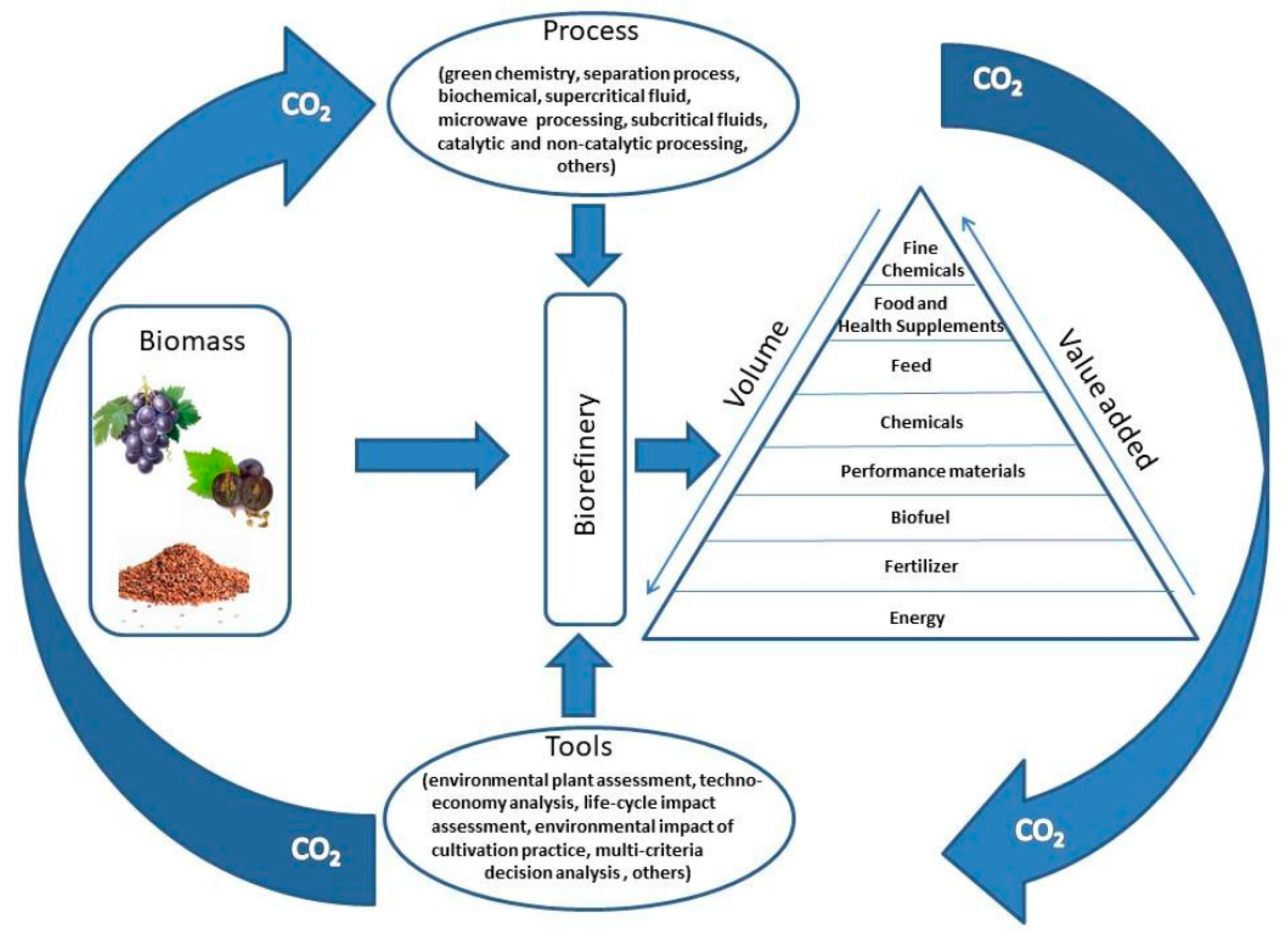
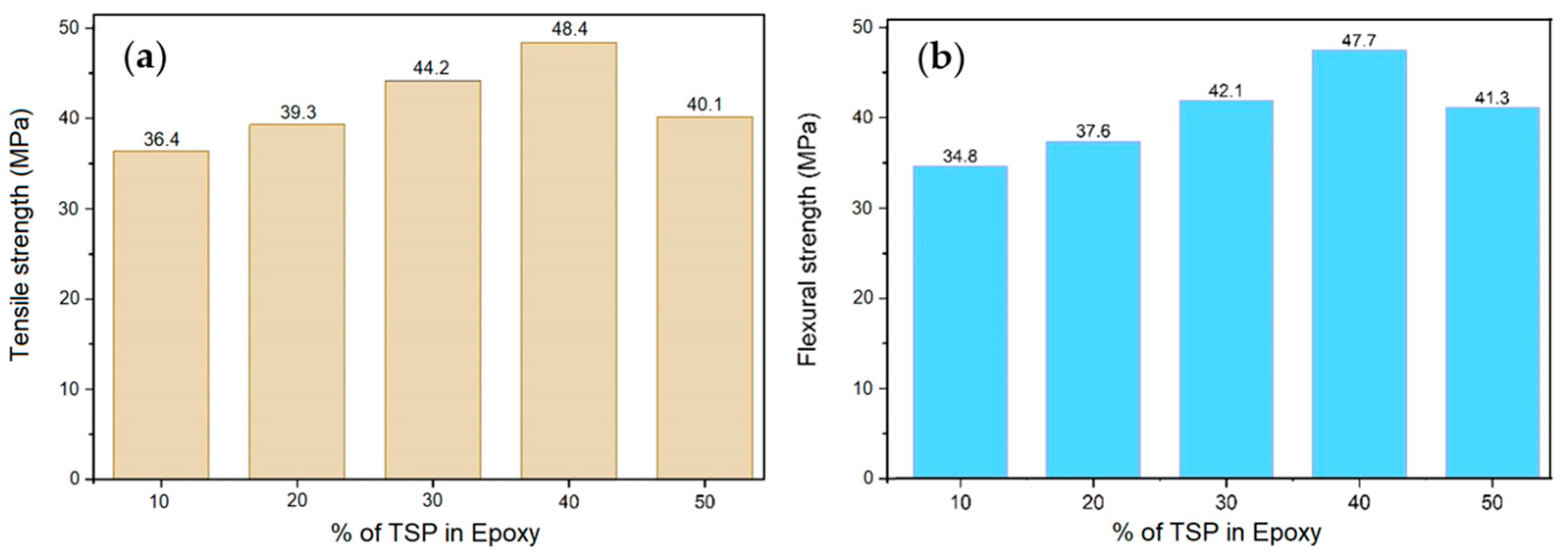

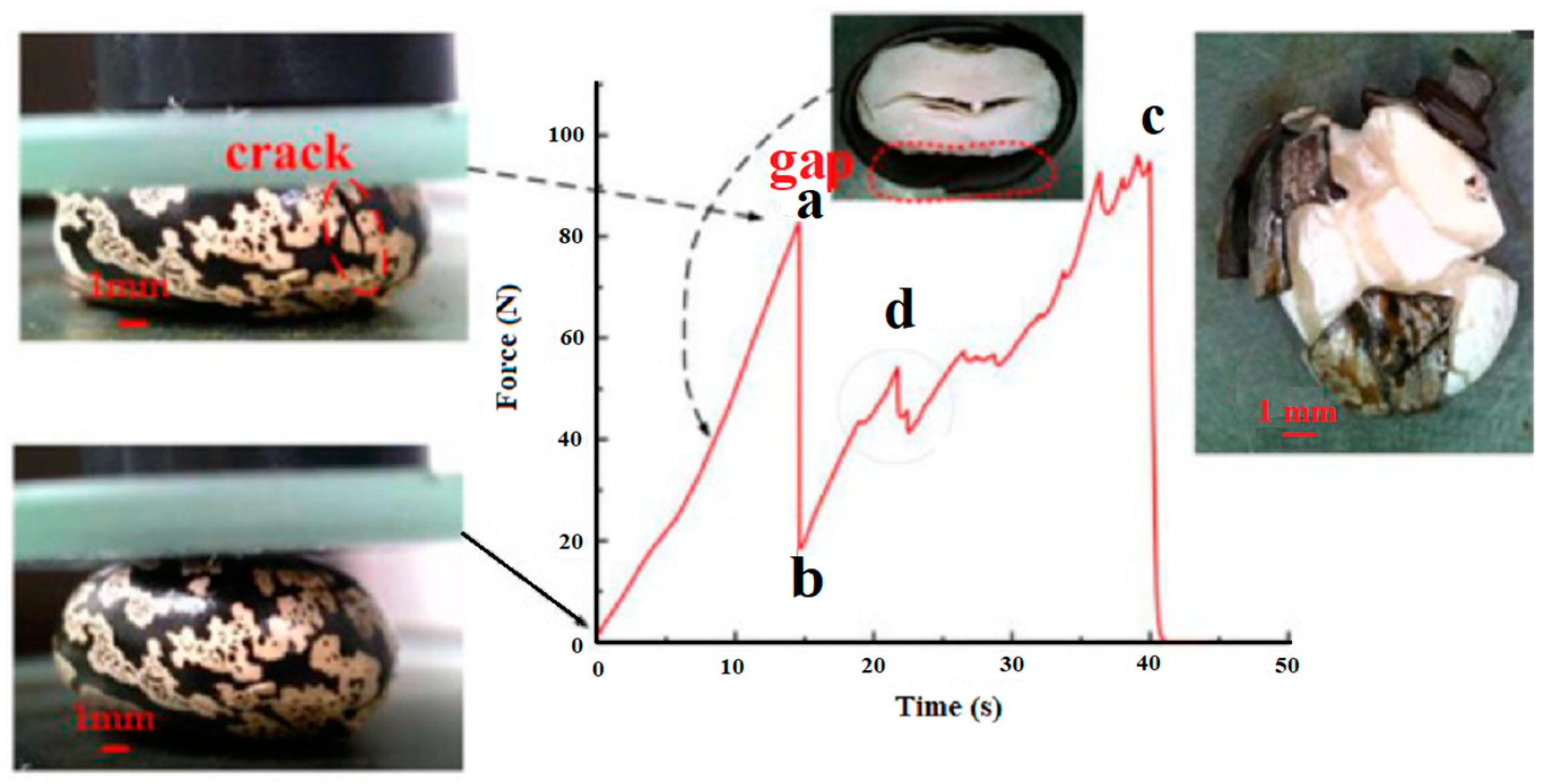
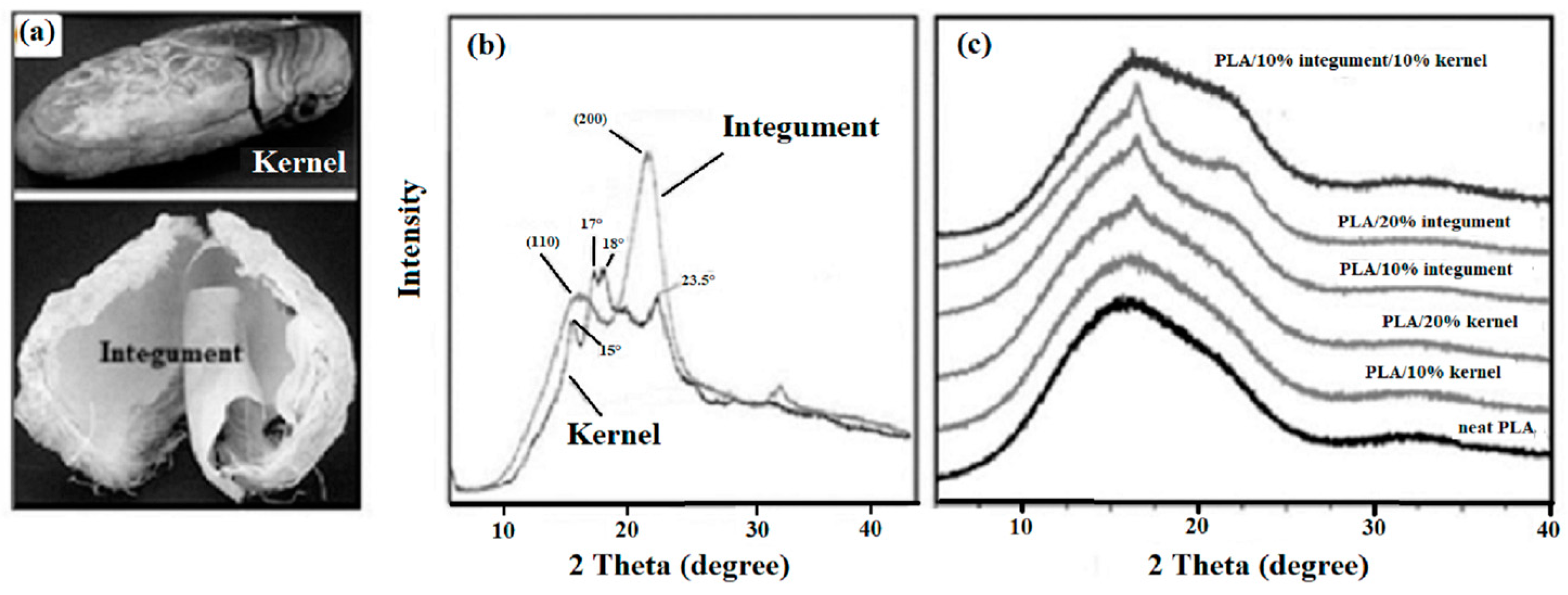
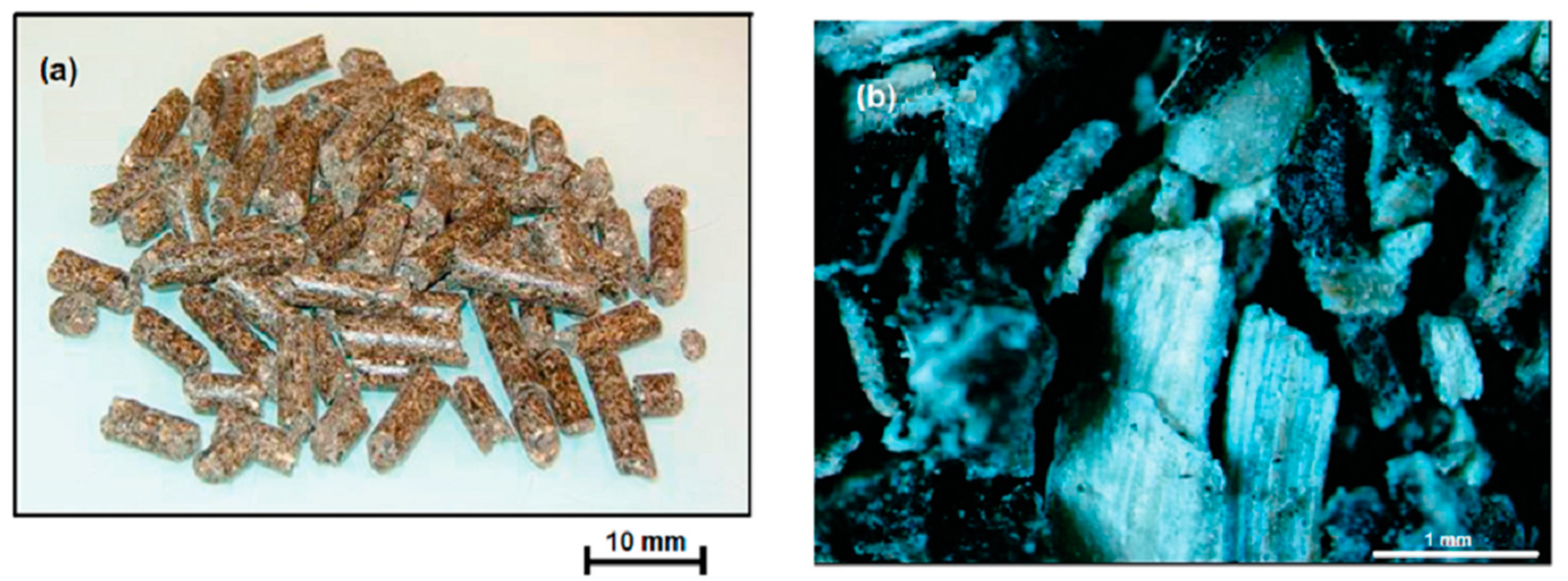


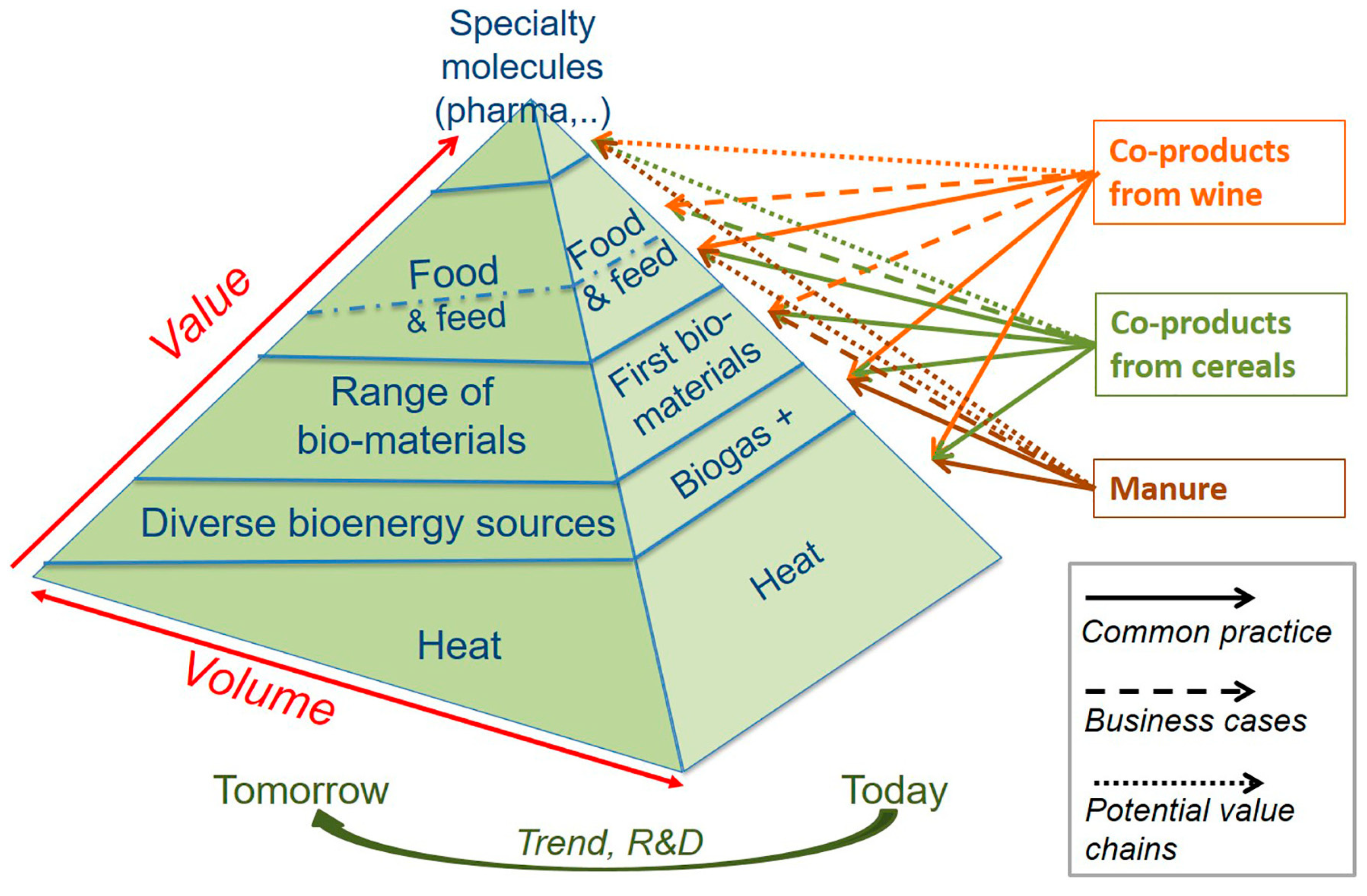
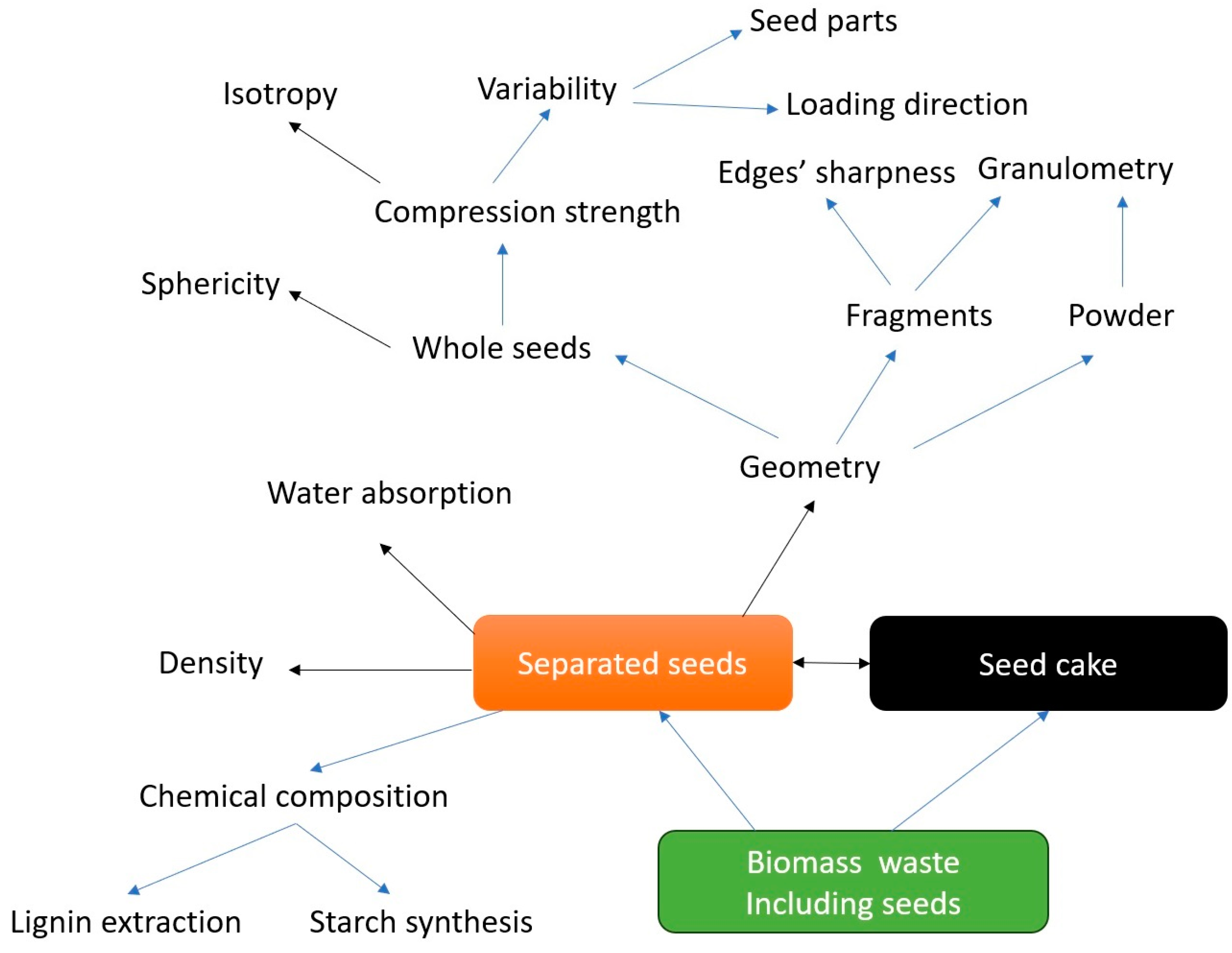
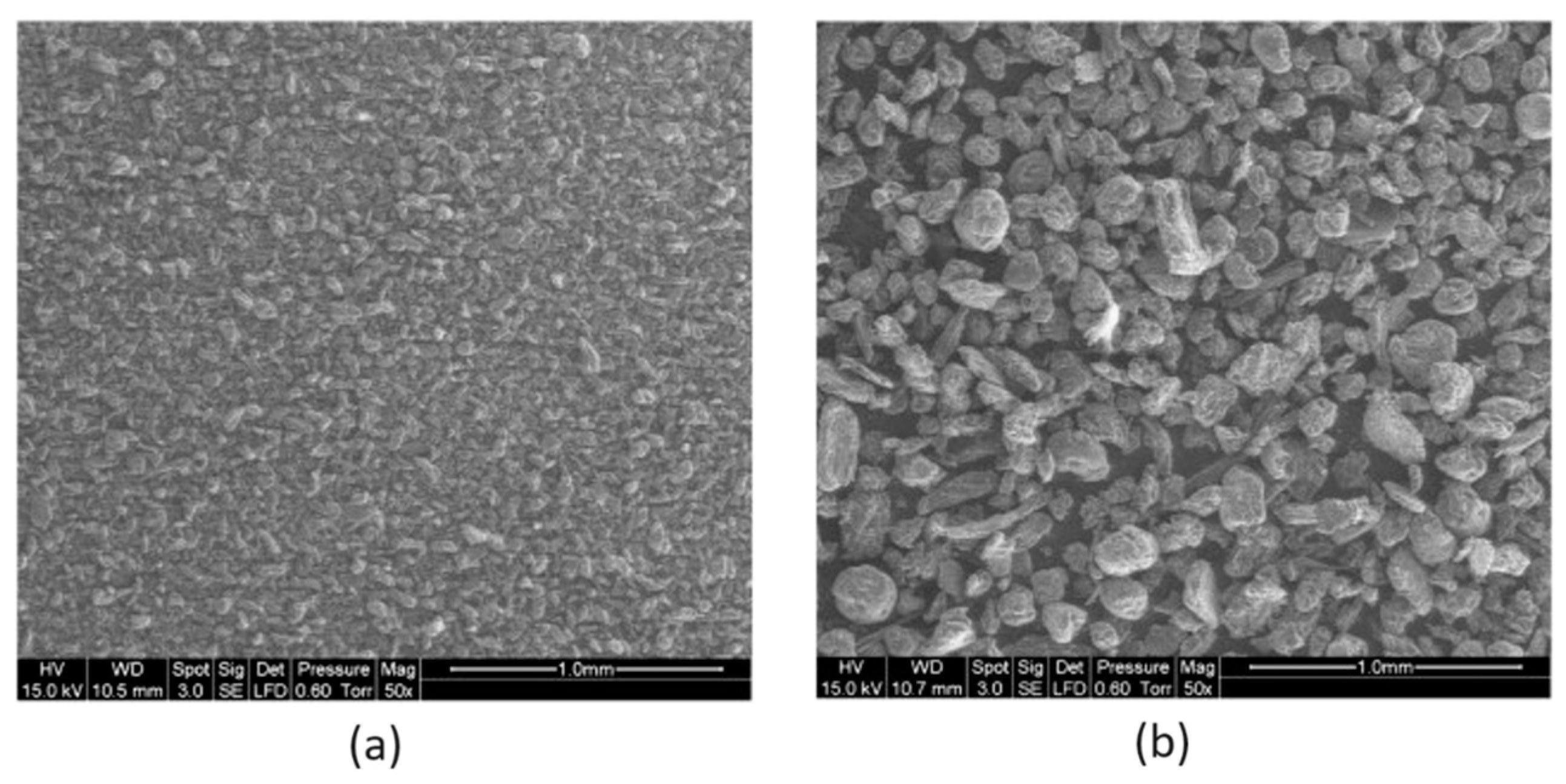
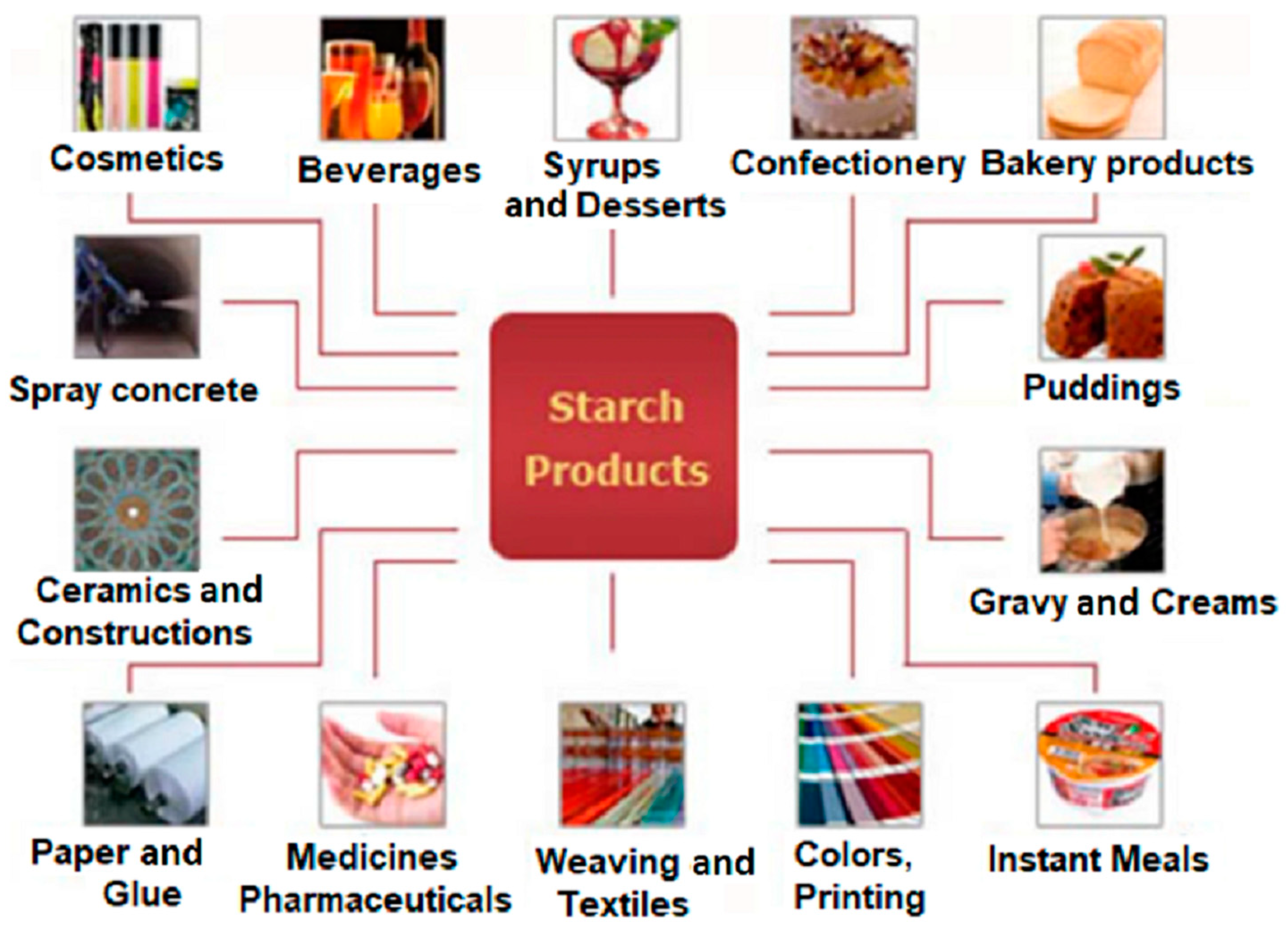
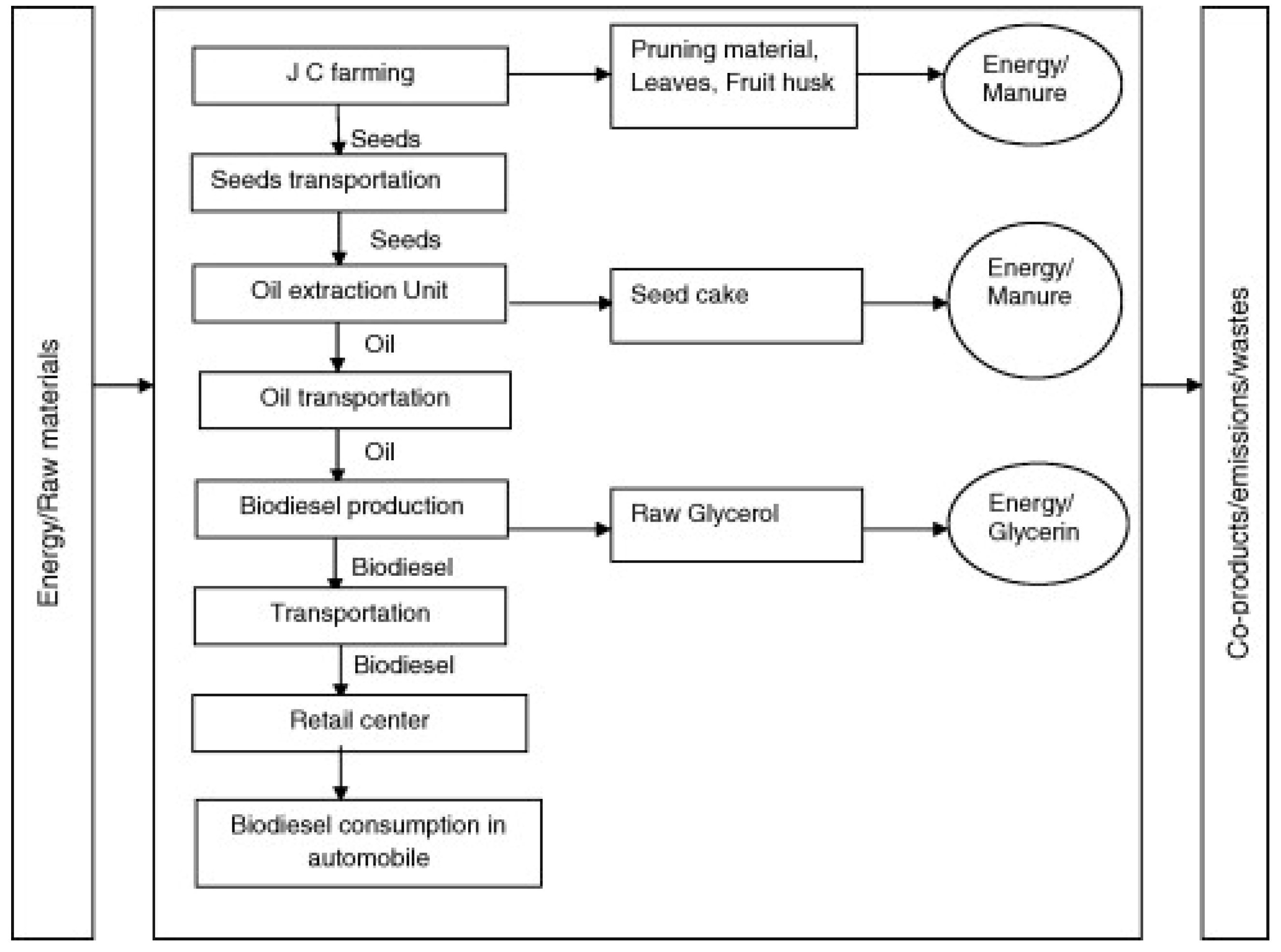
| Plant | Sphericity | Max. Compression Load (N) | Corresponding Moisture Content (%) | Ref. |
|---|---|---|---|---|
| Corn | 0.6–0.75 | 480 | 25 | [87] |
| Safflower | 0.58–0.63 | 33 | 6.5 | [88] |
| Cumin | 0.53 | 50 | 7 | [89] |
| Dioclea reflexa | 0.84 | 1500 | 12 | [90] |
| Shorea robusta | 0.71 | 247 | 10.5 | [91] |
| Black pepper | 0.94 | 75 | 9 | [92] |
| Powder Source | Resin | Diameter (µm) | Max. Amount (wt.%) | Ref. |
|---|---|---|---|---|
| Euterpe oleracea | Castor oil PU | Less than 70 | 12.5 | [120] |
| Moringa oleifera | PBAT | 41 ± 10 | 10 | [121] |
| Phoenix dactilifera | Epoxy | Up to 200 | 10 | [122] |
| Pistachio | PMMA | Up to 212 | 12 | [123] |
| Almond shell | PBS | 150 (average) | 30 | [124] |
Disclaimer/Publisher’s Note: The statements, opinions and data contained in all publications are solely those of the individual author(s) and contributor(s) and not of MDPI and/or the editor(s). MDPI and/or the editor(s) disclaim responsibility for any injury to people or property resulting from any ideas, methods, instructions or products referred to in the content. |
© 2024 by the authors. Licensee MDPI, Basel, Switzerland. This article is an open access article distributed under the terms and conditions of the Creative Commons Attribution (CC BY) license (https://creativecommons.org/licenses/by/4.0/).
Share and Cite
Fragassa, C.; Vannucchi de Camargo, F.; Santulli, C. Sustainable Biocomposites: Harnessing the Potential of Waste Seed-Based Fillers in Eco-Friendly Materials. Sustainability 2024, 16, 1526. https://doi.org/10.3390/su16041526
Fragassa C, Vannucchi de Camargo F, Santulli C. Sustainable Biocomposites: Harnessing the Potential of Waste Seed-Based Fillers in Eco-Friendly Materials. Sustainability. 2024; 16(4):1526. https://doi.org/10.3390/su16041526
Chicago/Turabian StyleFragassa, Cristiano, Felipe Vannucchi de Camargo, and Carlo Santulli. 2024. "Sustainable Biocomposites: Harnessing the Potential of Waste Seed-Based Fillers in Eco-Friendly Materials" Sustainability 16, no. 4: 1526. https://doi.org/10.3390/su16041526









